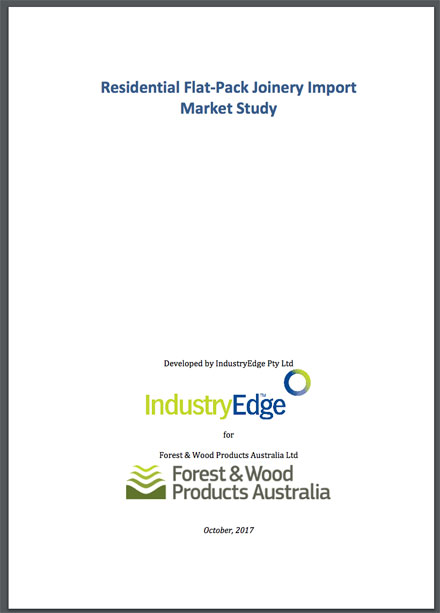
Foreign flat-pack imports make up approximately 15% of the total household joinery fitted in Australia each year, according to a new study commissioned by FWPA to illuminate what was previously a statistical black hole. Source: Timberbiz
The study to develop reliable data around flat-pack imports was commissioned in response to industry fears that high volumes were flooding the domestic market, taking trade away from home-grown businesses.
Jim Houghton, Statistics and Economics Manager of FWPA, said that volumes were not larger than expected and the data could potentially alleviate concerns among domestic manufacturers, but that the key research objective was to fill a long-standing and problematic knowledge gap.

“The lack of reliable data relating to this corner of the market had the potential to result in poor business decisions and inefficient planning. We hope this research will equip the industry with the tools it needs to make better informed marketing and production decisions,” he said.
In the past, trade data relating to flat-pack imports had been flawed due to factors including: a lack of available detail around potentially relevant import codes; the majority of imports being measured by value and without volumes or prices; and the wide variety of different products within the category.
Tim Woods, Managing Director at IndustryEdge, which conducted the research on household joinery in 2016, said the methodology developed for this project would help in other studies on imported products, with figures on flat-pack imports to be updated over time.
“The methodology developed to shed light on this previously uncharted area of the market will continue to have a life beyond this project,” he said.
In arriving at their findings, researchers worked with manufacturers, installers, wholesalers and importers to estimate how much joinery might be used in the Housing Industry Association’s ‘standard house’, both for new dwellings and properties undergoing renovation.
Because not every house is the standard house, these calculations were then scaled using the average sizes of different dwelling types. This gave a figure of 605,466 cubic meters of wood panels/ joinery substrate being fitted in Australia household kitchens during the time period.
It was then calculated that 516,194 cubic meters of that joinery substrate had been produced locally in Australia, leading researchers to determine the remaining 89.272 cubic meters (or 15% of the total) must have been imported.





